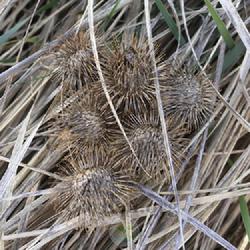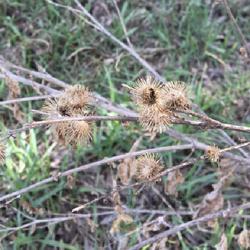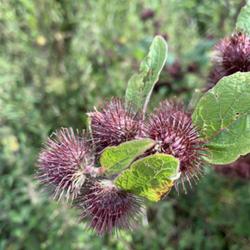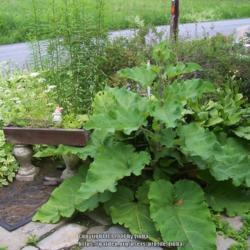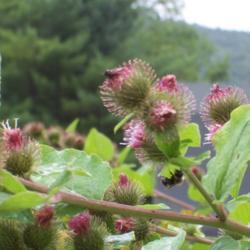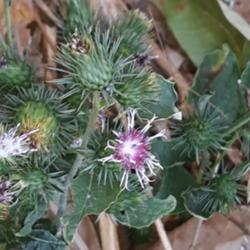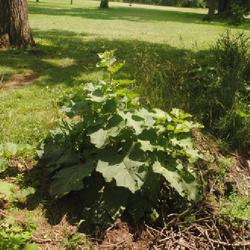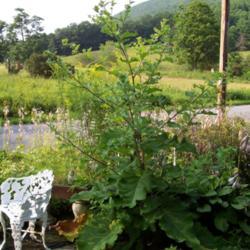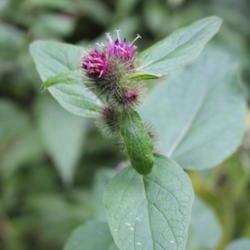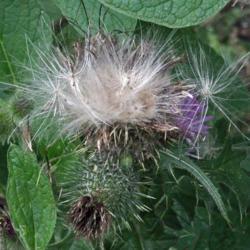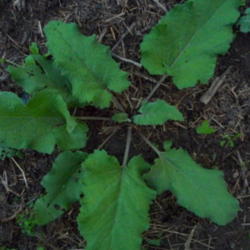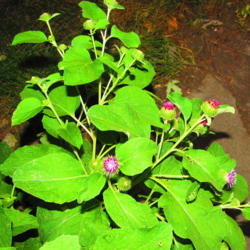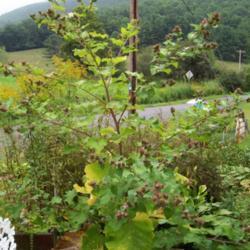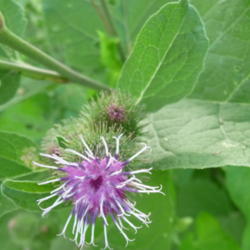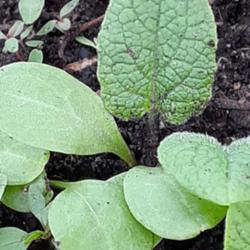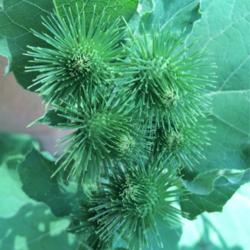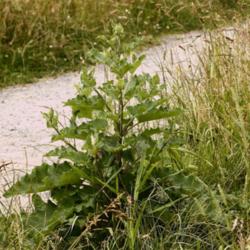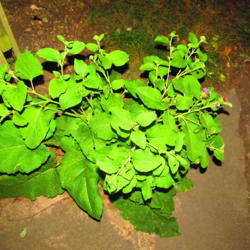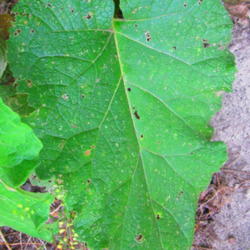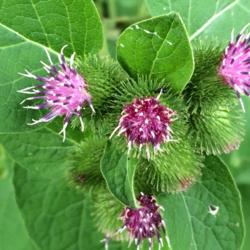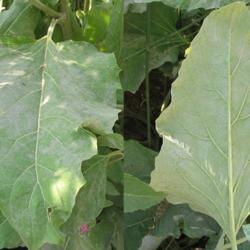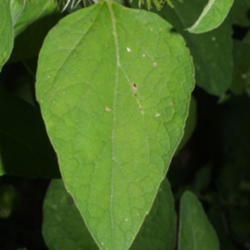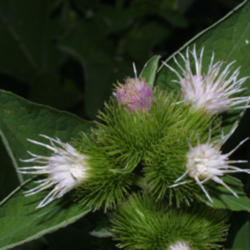| Plant Habit: | Herb/Forb |
| Life cycle: | Biennial |
| Sun Requirements: | Full Sun Full Sun to Partial Shade Partial or Dappled Shade |
| Water Preferences: | Mesic |
| Plant Height: | 24 - 60 inches |
| Plant Spread: | 18 - 24 inches |
| Leaves: | Other: Distinctive large leaves, similar to rhubarb (20 inches long, 12 inches wide) |
| Flowers: | Other: 2nd year... kind of looks like a bull thistle without the spines |
| Flower Color: | Purple White |
| Bloom Size: | Under 1" 1"-2" |
| Flower Time: | Summer Late summer or early fall |
| Inflorescence Height: | up to 5 feet |
| Underground structures: | Taproot |
| Uses: | Medicinal Herb Will Naturalize |
| Dynamic Accumulator: | Mn (Manganese) |
| Resistances: | Deer Resistant |
| Propagation: Seeds: | Self fertile Other info: 15000 seeds per plant is average, can number in the hundred of thousands |
| Pollinators: | Self Moths and Butterflies Bees |
| Miscellaneous: | Tolerates poor soil |
| Conservation status: | Least Concern (LC) |
